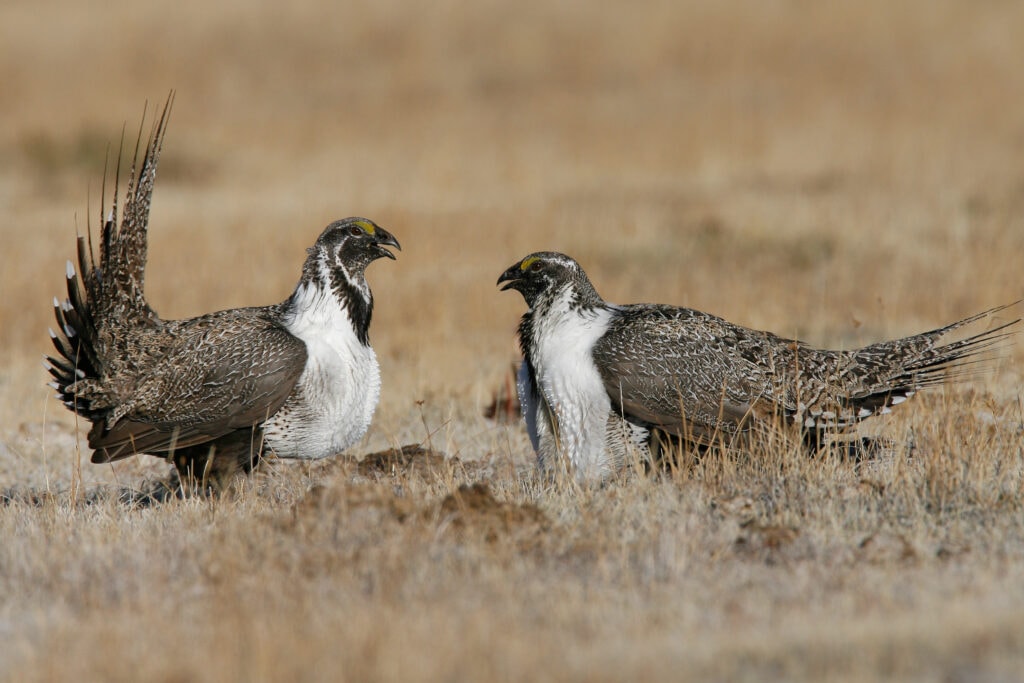The Greater Sage-grouse declined by 83% between 1966 and 2015. From as many as 16 million birds in pre-colonial North America, to just 200,000 now, the Greater Sage-grouse’s steady decline has been a matter of concern for conservation groups for years. The Greater Sage-grouse is kind of a strange bird. They are known for their “lekking” approach to courtship, during which males gather and display at “lekking grounds.” The courtship display of the Greater Sage-grouse involves the male swallowing up to a gallon of air into their esophageal pouch and releasing it with a booming sound.
Related Article: Puffin Populations Up and Down in Ireland and Iceland
Amongst the unusual traits of the Greater Sage-grouse is its reliance on sagebrush. As the name implies, the Greater Sage-grouse dwells in the sagebrush country of the Northwestern United States and Canada. These birds are able to digest the tough sagebrush thanks to specialized stomachs. Sagebrush is essential to their diets and their survival. In winter, Greater Sage-grouse gain weight by eating sagebrush leaves.
You would think, then, that preserving sagebrush is step one in conserving this species. Surprisingly, traditional conservation efforts for the Greater Sage-grouse have actually involved culling sagebrush. Conventional land management techniques for improving sage-grouse habitats include mowing and the use of herbicides to reduce the population of Wyoming big sagebrush. In theory, this has been done to give more nutritious vegetation the space to grow. The idea is that with less Wyoming big sagebrush, more nesting grounds become available, more diverse plants can grow, and more insects can flourish, providing another food source for the Greater Sage-grouse.
A recent study from the University of Wyoming has called this practice into question. The study found no positive correlation between the reduction of Wyoming big sagebrush and outcomes for Greater Sage-grouse. As a matter of fact, it also found that the insects and invertebrates that such efforts are meant to promote also did not respond positively to sagebrush culling.
What they did discover is that Greater Sage-grouse rely on sagebrush for more than food. The reduction of sagebrush resulted in less cover for these birds to hide from predators, resulting in worse outcomes due to predation.
The study cautions that other types of sagebrush may still need to be reduced. The management of invasive plants is of much higher consequence to the survival of the Greater Sage-grouse than the potentially harmful removal of Wyoming big sagebrush. The study also suggests that preserving and maintaining undisturbed sagebrush country may have a bigger impact than more active management techniques.
Popular Article: In Defense of the Grackle

